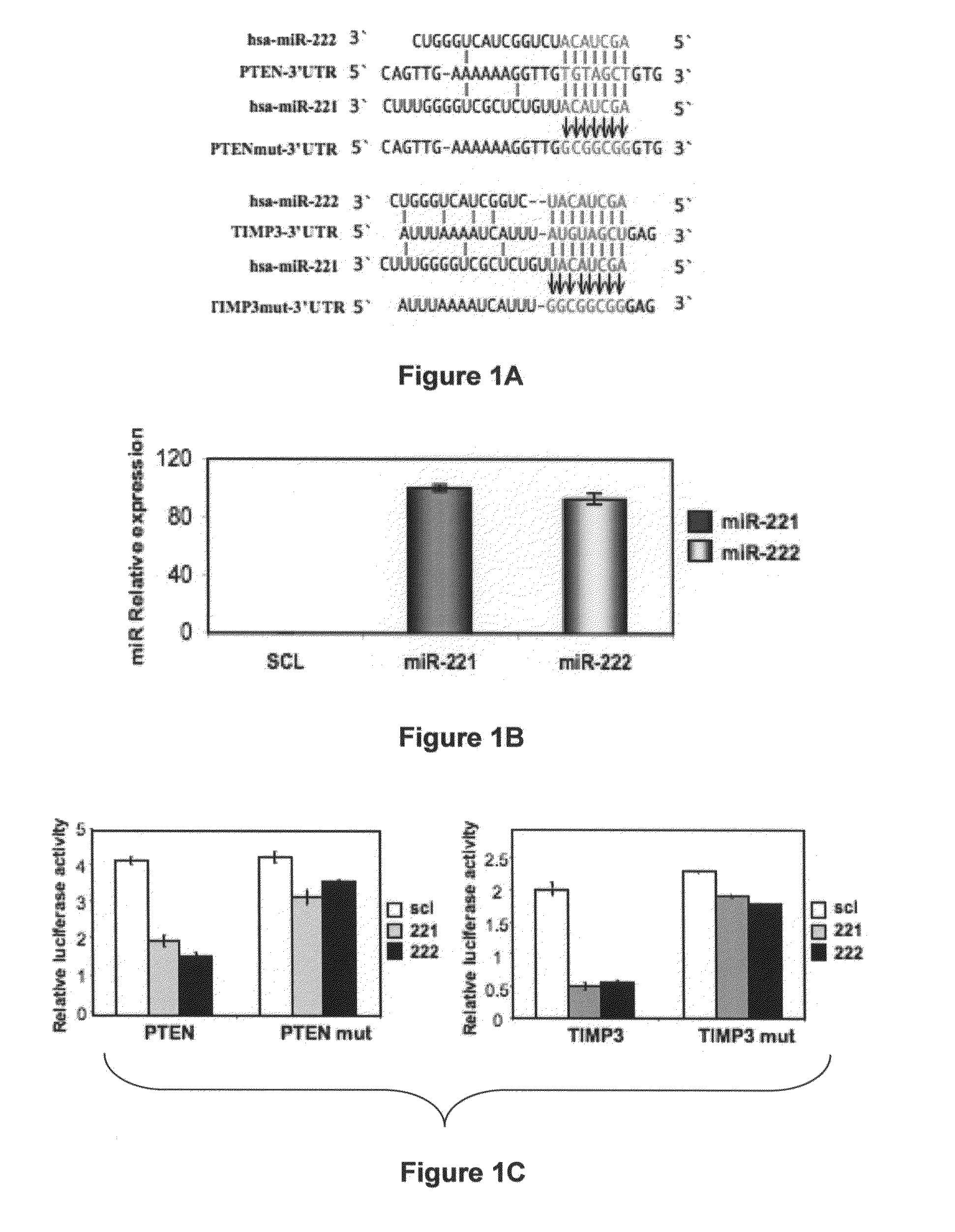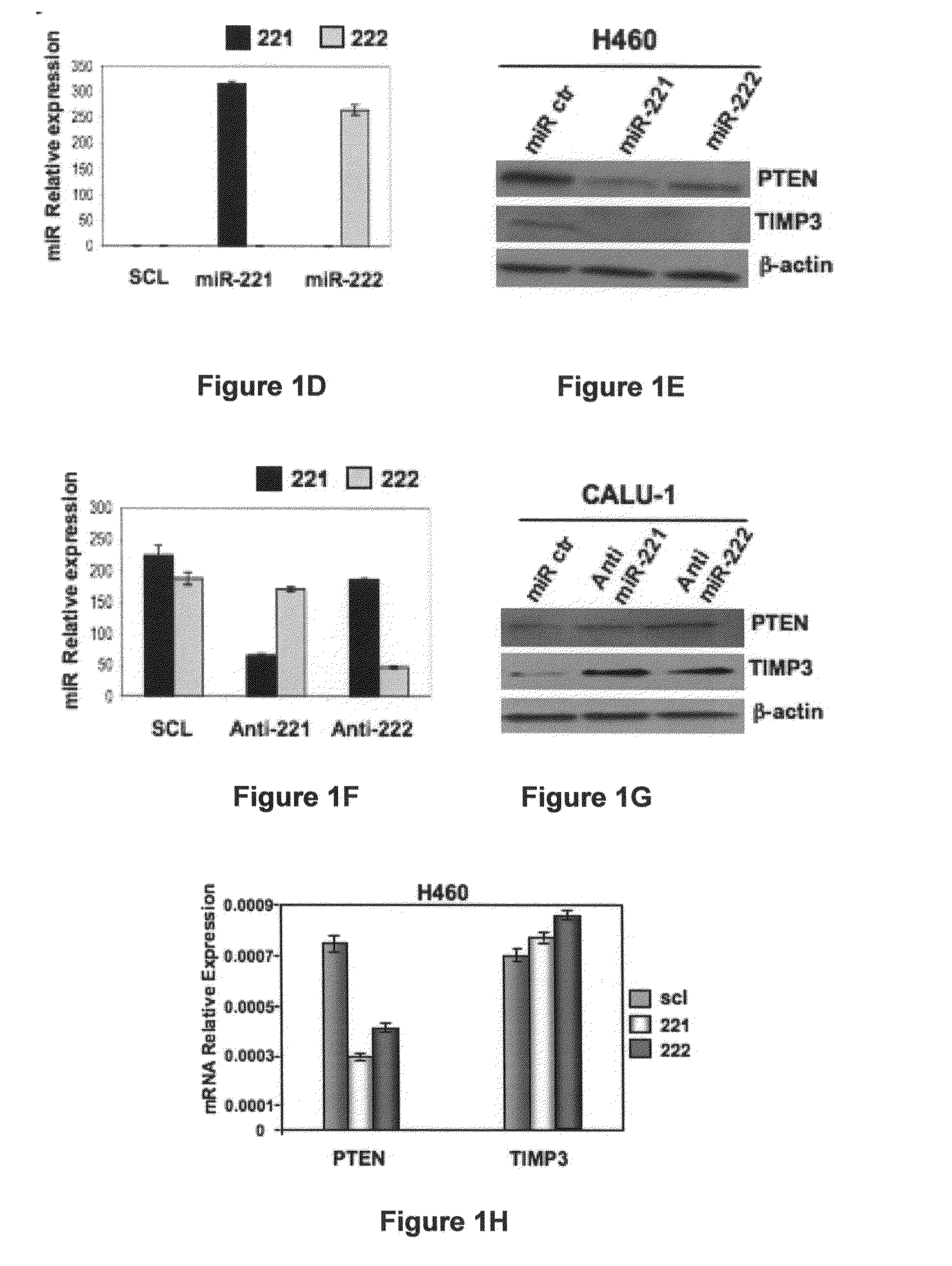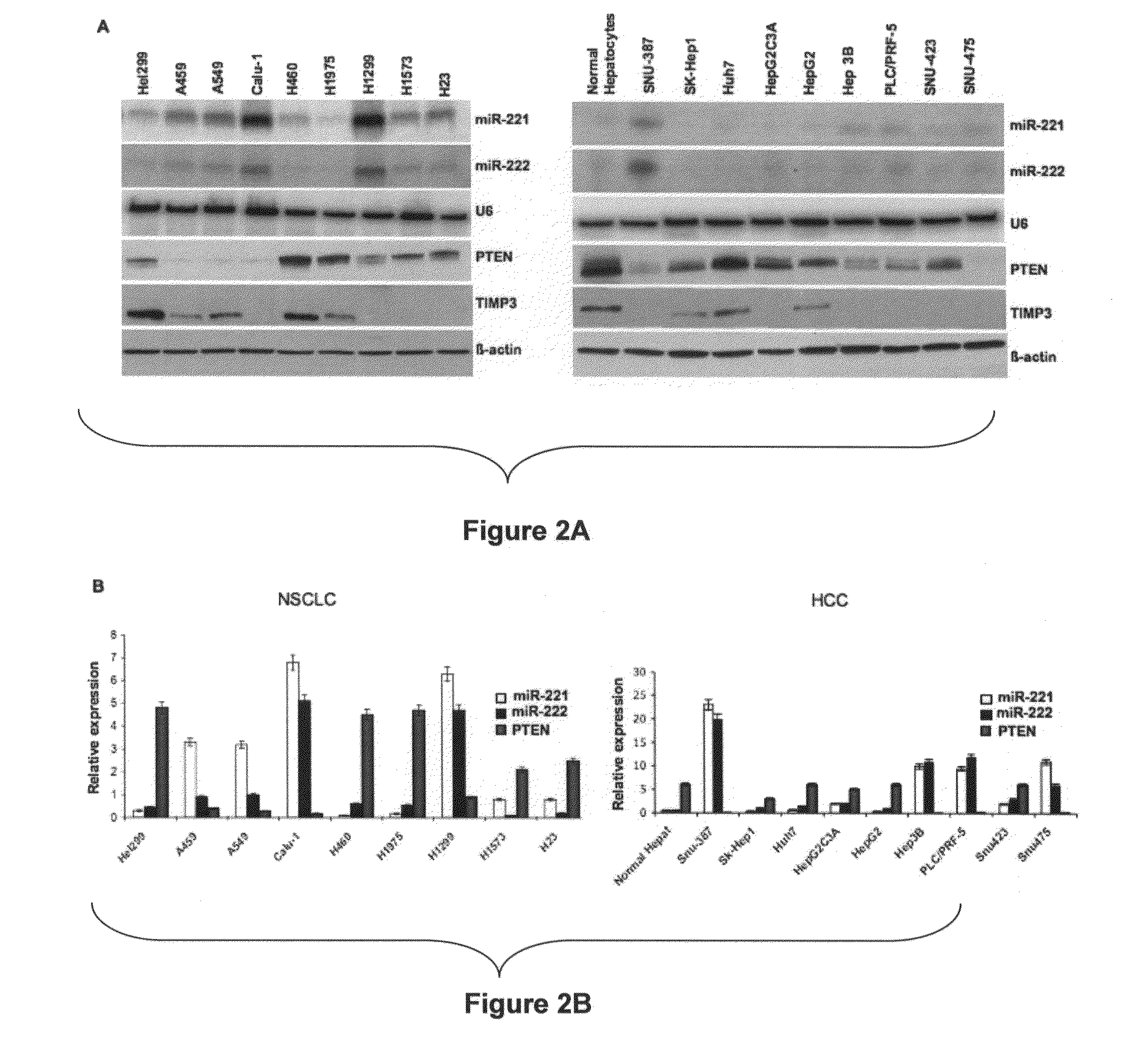Materials and Methods Useful for Affecting Tumor Cell Growth, Migration and Invasion
a tumor cell and material technology, applied in the field of molecular biology, can solve the problems of poor prognosis, obstacles to its clinical application, and inability to meet the needs of patients,
- Summary
- Abstract
- Description
- Claims
- Application Information
AI Technical Summary
Benefits of technology
Problems solved by technology
Method used
Image
Examples
example i
MiR-221 and miR-222 Directly Target PTEN and TIMP3 3′UTRs
[0230]To identify putative miR-221 and miR-222 targets, a bioinformatics search (Targetscan, Pictar, RNhybrid) was conducted. Among the candidate targets, 3′-UTRs of human PTEN (nucleotides 200-207, NM—000314) and human TIMP3 (nucleotides 2443-2449, NM—000362) contained regions that matched the seed sequences of hsa-miR-221 and miR-222 (FIG. 1A). To ascertain whether PTEN and TIMP3 are direct targets of miR-221 and miR-222, PTEN and TIMP3 3′UTR containing the miR-221 / 222 binding sites were cloned downstream of the luciferase open reading frame. These reporter constructs were used to transfect MEG01 cells, which express very low levels of miR-221 and miR-222 (FIG. 1B) and are highly transfectable (Freson et al., 2005). Increased expression of these miRs upon transfection, confirmed by qRT-PCR (FIG. 1B), significantly affected luciferase expression, measured as relative luciferase activity (FIG. 1C). Conversely, when luciferase ...
example ii
MiR-221 and miR-222 are Inversely Correlated with PTEN and TIMP3 Expression in NSCLC and HCC
[0231]The endogenous levels of miR-221 and miR-222 were evaluated by Northern blot in large panels of primary NSCLCs and HCCs, compared with the normal counterpart. MiR-221 and miR-222 expression was almost undetectable in normal lung and liver cells but highly expressed in the majority of tumor cell lines. Moreover, as assessed by Western blot, an inverse correlation between miR-221 and miR-222 RNA expression and PTEN and TIMP3 protein expression was found in most cell lines analyzed (FIG. 2A), confirmed also by qRT-PCR (FIG. 2B). TIMP3 mRNA expression levels was not tested because down-regulation of TIMP3 mRNA after enforced miR-221 and miR-222 expression was not observed (FIG. 1H). These results indicate that high expression of miR-221 and miR-222 is one of the mechanisms acting to negatively regulate PTEN and TIMP3 in NSCLC and HCC.
[0232]To verify whether these microRNAs affected PTEN and...
example iii
MiR-221 and miR-222 Induce TRAIL Resistance in NSCLC and HCC by Targeting PTEN and TIMP3
[0235]The effects of miR-221 and miR-222 and / or PTEN-TIMP3 silencing on cell survival and TRAIL resistance in both NSCLC and HCC were studied. First there was performed a proliferation assay on 5 HCC-derived cell lines, three of them (HepG2, Sk-Hep1 and Huh 7) with low miR-221-222 expression and two (PLC / PRF-5 and Snu-387) with high miR-221-222 expression level (FIG. 4A). Cells were exposed to TRAIL for 24 hours and subsequently cell proliferation was assessed using an MTT assay. Interestingly, cells expressing low levels of miR-221 and miR-222 underwent TRAIL-induced cell death, showing a very low proliferation rate, whereas cells over-expressing miR-221 and miR-222 did not display sensitivity when exposed to soluble TRAIL (FIG. 4A).
[0236]Moreover, Annexin-FITC and caspase 3 / 7 assays on TRAIL-sensitive cell lines Sk-Hep1 cells, (FIGS. 4B-4C), HepG2 and Huh7 (FIGS. 10A-10B), revealed an increase ...
PUM
| Property | Measurement | Unit |
|---|---|---|
| molecular weight | aaaaa | aaaaa |
| molecular weight | aaaaa | aaaaa |
| pH | aaaaa | aaaaa |
Abstract
Description
Claims
Application Information
 Login to View More
Login to View More - R&D
- Intellectual Property
- Life Sciences
- Materials
- Tech Scout
- Unparalleled Data Quality
- Higher Quality Content
- 60% Fewer Hallucinations
Browse by: Latest US Patents, China's latest patents, Technical Efficacy Thesaurus, Application Domain, Technology Topic, Popular Technical Reports.
© 2025 PatSnap. All rights reserved.Legal|Privacy policy|Modern Slavery Act Transparency Statement|Sitemap|About US| Contact US: help@patsnap.com



